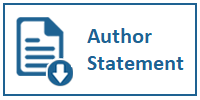INTEGRATION ANALYSIS OF SaaS BASED ACCOUNTING APPLICATION. CASE STUDY ON XYZ.COM
DOI:
https://doi.org/10.31937/si.v9i1.1286Abstract
SaaS application users get strategic benefits, among them the speed of implementation, reliability, and flexibility also optimization of infrastructure capacity. The company does integration with the aim to increase productivity, data accuracy, speed and flexibility [1]. This also drives XYZ.com, an online store in Jakarta, to integrate its web commerce application with SaaS accounting application. System integration design is carried out by analysis and observation of current business processes using the business objectives model. It is concluded that with system integration, XYZ.com wants to achieve 3 business objectives, i.e. (1) increasing the number of orders recorded in the accounting application, (2) improving stock accuracy, and (3) reducing the number of order cancellations due to unavailability of goods. System integration is designed to enable information retrieval such as products, contacts, transactions, and journals from accounting application through available API. Further research needs to be carried to realize the list of requirements that have been described in the feature tree to the stage of software development and implementation so that the objectives set by the business can be measured and improved.
Downloads
Downloads
Published
How to Cite
Issue
Section
License
Authors retain copyright and grant the journal right of first publication with the work simultaneously licensed under a Creative Commons Attribution-ShareAlike International License (CC-BY-SA 4.0) that allows others to share the work with an acknowledgement of the work's authorship and initial publication in this journal.
Authors are able to enter into separate, additional contractual arrangements for the non-exclusive distribution of the journal's published version of the work (e.g., post it to an institutional repository or publish it in a book), with an acknowledgement of its initial publication in this journal.
Copyright without Restrictions
The journal allows the author(s) to hold the copyright without restrictions and will retain publishing rights without restrictions.
The submitted papers are assumed to contain no proprietary material unprotected by patent or patent application; responsibility for technical content and for protection of proprietary material rests solely with the author(s) and their organizations and is not the responsibility of the ULTIMA InfoSys or its Editorial Staff. The main (first/corresponding) author is responsible for ensuring that the article has been seen and approved by all the other authors. It is the responsibility of the author to obtain all necessary copyright release permissions for the use of any copyrighted materials in the manuscript prior to the submission.















